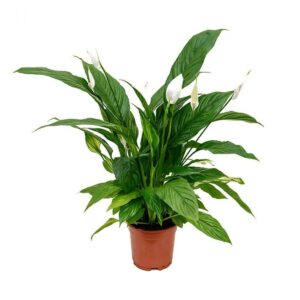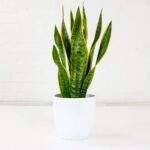Some of us are fortunate to live in climates where we are able to spend much of our time outdoors, enjoying the wonderful benefits of nature and fresh air. However, many of us live in countries with long periods of cold weather that keeps us indoors for extended periods, often causing us to suffer from poor air quality. With modern homes becoming more insulated, it has become easier to trap indoor air pollutants, such as benzene, formaldehyde and ammonia, which can have a negative impact on our health.
Poor air quality in homes results from indoor pollutants found in glues and adhesives, carpets, chemicals in household cleaners, foam insulation materials, petrol/gasoline, paint and pressed-wood products. These pollutants can have an immediate effect with reactions such as coughing, sneezing, eye irritation, dizziness, headaches, tiredness and rapid heartbeat. With ongoing exposure, long-term health problems can also occur, including respiratory conditions, heart disease and cancer.
Proper ventilation is very important, as with many people spending most of their time inside of their homes or offices, indoor pollutants are often a bigger health risk than outdoor pollutants. In addition to good ventilation, studies have shown that house plants act like a natural filtration system, helping to improve the air quality by absorbing harmful substances from the air. Providing not only beauty and life to homes, house plants are extremely beneficial as they help to oxygenate the air, removing volatile organic compounds that have a negative impact on our health.
Peace Lily

A popular choice in homes, the Peace Lily is easy to maintain and should be kept close to, but not directly next to a window. Toxic to animals and humans, the Peace Lily breaks down and neutralises chemicals such as trichloroethylene, benzene and formaldehyde from the air.
English Ivy

This plant is easy to grow and take care of, enjoying lots of bright light but is poisonous. Considered to be one of the best air filtering plants, English Ivy is highly effective at absorbing chemicals and is the most efficient plant to absorb formaldehyde.
Spider Plant

Considered to be one of the most adaptable house plants, the Spider Plant is easy to grow and look after. Another top air-purifying plant, Spider Plants remove benzene, formaldehyde, carbon monoxide and xylene from the air.
Areca Palm
One of the easiest palms to grow indoors, the Areca Palm is a very effective air humidifier and can purify benzene, formaldehyde, and trichloroethylene from the air.
Bamboo Palm
Another great humidifier, the Bamboo Palm does not require a lot of light and is highly resistant to pests. Highly effective at removing toxins from the air, the bamboo palm is the third most powerful plant at removing formaldehyde from the air.
Dracaena
A large group of houseplants, the Dracaena requires moderate sunlight and watering and is toxic to animals. It is very effective at eliminating trichloroethylene formaldehyde, xylene, toluene and benzene.
Mother In Law’s Tongue

Also known as Snake Plant, this is a very popular house plant and easy to care for. It is unique for sucking in carbon dioxide and releasing oxygen during the night, with studies showing that this plant reduces respiratory symptoms, eye irritation, and headaches.
Rubber Plant

Preferring bright but indirect light and regular watering, the Rubber Plant is toxic to animals and humans. Highly effective at removing toxins, particularly formaldehyde, from the air.
Tina Sayer, Contributing Editor
Tina is a Wellness and Parenting Coach, writer and poet. Apart from her coaching, she delivers motivational speeches and workshops on Wellness and Parenting. She is passionate about healthy living and caring for our animals and planet. Much of her spare time is spent in nature with her dogs, and as a mother and nurturer. Tina has been a loyal volunteer with MCC (formerly Bloom in Wellness) for many years and is now a contributing editor.

